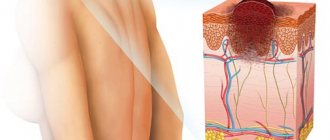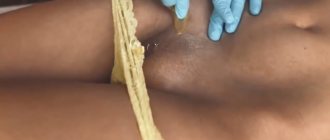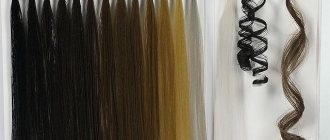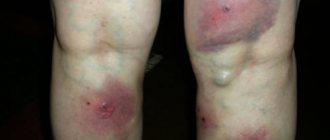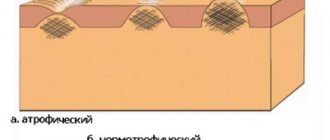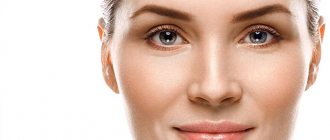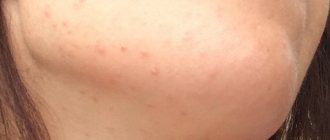Alopecia is a serious problem faced not only by men but also by women. Plastic surgeon, hair transplant expert at the Institute of Plastic Surgery on Tsvetnoy Boulevard Alexander Valerievich Gulyaev told FAN about the causes, types and methods of treating baldness.
Description of the pathology
Alopecia Areata (pattern baldness) is an acquired abnormal hair loss in a certain area of the skin with clear contours, which looks like rounded areas of various diameters. According to demographic studies, 0.05–0.1% of humanity suffers from this pathology in the world. It is not characterized by gender or age predisposition, so the disease equally affects people of any gender and even children.
Area baldness is characterized by a chronic course, which is often accompanied by inflammation without the formation of a skin scar. The target of the lesion is the hair follicle, much less often the nail plate. As a result of disruption of the cells of the root system, the bulb dies and, as a consequence, the formation of bald patches. Based on their shape, bald spots can be round, oval, or have a dotted outline.
Despite the benign course of the disease and the absence of an immediate threat of harm to human health, alopecia areata can cause significant damage to the psychological component. Often people suffering from localized hair loss plunge into prolonged depression and close themselves off from the outside world. Such disorders are especially typical for girls and adolescents, who are most susceptible to criticism of their appearance.
Do traditional methods of treatment help?
Traditional medicine is often used as an addition to basic treatment methods, or as preventive measures to help prevent hair loss.
Traditional methods will only help strengthen the hair follicles (if they are absent, using these recipes is pointless). Here are some recipes:
- 1.2 tbsp. Mix gelatin with water until you obtain a paste consistency. Add a little colorless henna, the yolk of 1 egg. Apply the mask to your hair for 30 minutes. Rinse thoroughly. You can use this product 1-2 times a week.
- 2.1 tbsp. Mix mumiyo with 1 yolk and a teaspoon of honey. Apply to hair for half an hour (carefully distribute over the scalp and the entire length of the hair), rinse with water and shampoo.
Read on our website about effective masks against hair loss using: oak bark, sea and table salt, garlic, yeast, burdock oil, herbal decoctions, burdock infusions, hops.
Causes of focal hair loss in women
Today it is impossible to establish a single etiological factor that is the culprit of this pathology. There are several theories, but most scientists and doctors lean towards the autoimmune mechanism. Its essence lies in the body’s perception of its own follicles as foreign bodies that need to be destroyed. Proof of this assumption is the identification of immunoglobulins M, A and G, as well as C3 immune complexes, in all patients.
However, several predisposing and provoking factors have been unanimously identified that place a person at risk of developing this pathology. These include:
● Compounded heredity (in 10–20% of cases the disease is familial); ● Long-term persistence of the virus in the body; ● Stress - it is quite difficult to establish the direct effect of the emotional background on alopecia areata in women, since it is often not a consequence, but a cause of depressive conditions; ● The presence of chronic foci of infection (including fungal ones) after suffering or untreated diseases; ● Malabsorption in the small intestine (problems in the functioning of the gastrointestinal tract, fermentopathy, dysbacteriosis), which leads to a deficiency of vitamins and microelements; ● Endocrine pathologies - most patients are diagnosed with problems with the thyroid gland, adrenal glands, hypothalamus and pituitary gland; ● Physical trauma - in medical practice, many cases of bald spots appearing after a blow, stab or cutting injury have been recorded; ● Disorders of the autonomic nervous system, which can cause spasm of the small blood vessels that supply the follicles. The spasmodic state of the arteries and capillaries completely stops the flow of blood, which becomes the direct cause of alopecia areata in women.
Possibility of relapse
Even successful, effective treatment (regardless of the methods) of total alopecia does not guarantee that the disease will not recur . The risk of relapse can be reduced only if the cause of baldness is completely eliminated.
Total alopecia is the final stage of focal type baldness. Despite the intensity of development, the disease can be cured by eliminating its main cause and using competent methods of therapy.
Of course, if we are talking about the congenital absence of hair follicles , traditional (as well as folk) methods are completely powerless; only transplantation will help.
The first signs and symptoms of the disease
The most important manifestation of pathology is causeless baldness in a certain area of the body (usually the face or head). At the site of the loss, oval or round foci of “bare” skin remain without the slightest trace of trauma to its structure or loss of integrity, but with characteristic redness, itching or slight pain. However, there are several clinical signs that may indicate the presence of a pathological process. These include:
● Fragility of curls and their easy pulling out; ● The appearance of “loose hairs”, which are short in length and surround the area of loss; ● Transformation of the nail plates (at later stages of development) in the form of compression, transverse striations or waviness, as well as dullness.
Based on the symptomatic complex, alopecia in women (as with all types of alopecia) typically occurs in three main stages:
1. Progression - characterized by the appearance of edema and hyperemia of the skin (manifestation of the inflammatory process) at the site of complete hair loss. Patients complain of annoying itching, a slight tingling or burning sensation. Around the bald spot, areas with pathologically short hairs are found, which in a short period of time will also turn into “empty” skin lesions. As a rule, women notice the disease while scratching or after touching their head. At the initial stage, you can easily pull a strand and understand that it is not fixed to the surface of the body. The bulbous end of the rod undergoes dystrophic changes and acquires the characteristic appearance of a “dangling rope.” 2. Subacute - may be accompanied by minor manifestations of inflammation or occur completely without them. The second stage is characterized by the skin becoming pale in color. 3. Regression - is the final stage and is characterized by the smooth germination of pigmented terminal and vellus light hairs. They begin to slowly increase in size and acquire their original color.
Diagnostics
At the moment, there is no most accurate and reliable method that could reliably diagnose alopecia. At the first suspicion of this disease, the patient is sent for a consultation with a dermatologist and trichologist. Subspecialty specialists conduct a thorough examination of the skin and hair, eliminating or confirming the presence of causes and predisposition factors to the appearance of baldness. If necessary, additional consultation with a therapist, endocrinologist, neurologist, gynecologist or psychologist is possible.
To confirm or refute the diagnosis, you will need to undergo the following tests:
● General and biochemical blood test (can confirm the presence of an inflammatory process); ● Endocrine studies (determining the concentration of hormones of the thyroid gland, adrenal glands, ovaries, pituitary gland, hypothalamus, etc.); ● General X-ray of the head (to identify traumatic brain injuries) ● Serological diagnosis of syphilis; ● Testing the scalp for strength (compulsory); ● Skin biopsy (4 millimeters in diameter will be required for analysis) at the site of baldness for further microscopic examination.
At-risk groups
Total alopecia is most often observed in representatives of the stronger sex. However, this does not mean that the disease does not occur among the female part of the population.
And yet, in women, alopecia of this type occurs less frequently than in men due to the physiological structure of the scalp.
Hair follicles in women are located in deeper layers of the skin than in men, which contributes to their greater protection from the effects of negative factors.
Total alopecia develops in people regardless of age . There are cases of complete hair loss in children (for certain reasons).
How to cure alopecia areata in women
The choice of treatment tactics directly depends on the shape, stage, intensity and location of the lesion. An important point in therapy is the use of complex measures (local and general effects), since only a multifaceted approach can ensure complete recovery or stable remission. Continuous psychological support from loved ones or a psychologist will be mandatory at all stages of the fight against the disease. Hair loss can be a major emotional blow, so it's important to combat depression and stress, which can both aggravate and delay recovery. When treating the causes of focal baldness in women, several methods are used:
1. Taking medications. 2. Physiotherapeutic procedures. 3. Use of folk remedies.
Physiotherapy
Physiotherapeutic procedures show excellent results in the treatment of alopecia. Their main advantage is complete safety and local effect on the problem area, thereby improving blood supply and nutrition to the skin. They not only significantly increase the duration of remission, but also quite often help to completely get rid of hair loss. The most effective are:
● Electrophoresis - the minimum number of sessions to achieve the required result must be at least 8. The main effect is aimed at the follicles and the elimination of unpleasant sensations (itching and burning). ● Cryotherapy - dosed exposure to low temperature is used on the lesion. This has a stimulating effect on metabolic processes and blood circulation of the bulb. ● Darsonvalization is the most popular and modern physiotherapeutic method. It is based on contact of the skin with low frequency electric current, which leads to improved microcirculation and vascular conductivity. Complete cure can be achieved after a minimum visit of 10 sessions. ● PUVA therapy - is based on irradiating the head with ultraviolet radiation. ● Massage - manual techniques on the scalp using oils or medicated lotions also have a positive effect on the course of therapy. However, it is important to note that massage procedures are prohibited for use if a pronounced autoimmune component is detected, since in this condition it is necessary to reduce blood flow to the follicle.
Medicines for internal use
Modern medications help stop the course of the disease even in advanced stages, so timely treatment of alopecia areata in women can result in a complete cure of baldness and the return of a voluminous hairstyle. The following are prescribed as basic therapy:
● Anti-inflammatory (in the presence of an infectious focus); ● Immunomodulators (to influence the immune system); ● Sedatives; ● Hormones (if endocrine pathology is detected); ● Vitamins and missing microelements; ● Growth stimulants and improved nutrition of the hair follicle. One of the most effective drugs with proven positive results is Selencin. It stops the process of hair loss in just 2 months, promotes the appearance of new ones, strengthens and restores weakened roots. Also, the medicine is not addictive, so after completing the treatment course there is no withdrawal syndrome.
Homeopathy
This method of treatment involves the use of food and biologically active supplements. In large doses, drugs can cause serious harm to health, but in small quantities they have a stimulating effect on the body and force it to fight the disease. The effectiveness of this method has not been proven, therefore it belongs to the category of self-medication and is not prescribed by professional doctors. As a rule, patients resort to taking Selenium, Phosphorus and Lycopodium.
Folk remedies
This method is not the main, but an auxiliary therapeutic element. It implies the use of agents that have an external irritant effect. To do this, you can use a decoction of oak bark, mustard, hot pepper, onion juice, horseradish and alcohol tinctures with medicinal herbs. They are applied to the affected areas in the form of a mask before washing your hair, and also rubbed directly into the bald spot.
Prevention measures
In order not to think about how to treat alopecia areata in women, it is enough to follow a few simple preventive rules that will help you maintain beautiful hair for the rest of your life.
● Monitor your diet and consume enough vitamins, nutrients and microelements; ● Avoid stressful situations - try to fill your days with bright positive emotions; ● Provide quality hair care; ● Gentle and smooth combing, which prevents the possibility of pulling out a strand; ● Avoid hypothermia of the head, so as not to provoke vasospasm. Therefore, in the cold season it is necessary to wear a hat; ● Pay due attention to your own health. Take prescribed medications until the desired effect is achieved (visit the dentist periodically, treat sore throats and viral diseases) in order to prevent the formation of a chronic focus of infection; ● Monitor hormonal levels (menstrual cycle) and contact a specialist at the first violations.
When is surgical hair extension used?
If the person wishes and there are no contraindications, surgical intervention is performed.
Bleeding disorders and allergic reactions to anesthesia are the main contraindications. The rest include:
- Follicle transplantation is prohibited for persons under 15 years of age. At this age, the area of the lesion is difficult to determine.
- For a number of psychological disorders, hair transplantation is not performed.
- If the patient suffers from skin diseases, especially at the development stage.
- Persons with cardiovascular diseases or oncology are recommended to have a preliminary consultation with a doctor.
- Patients with diabetes are at risk for post-operative infections.
A strip is cut out with a scalpel and the grafts that will be used for transplantation are removed. Special incisions are made into the affected area for hair transplantation.
The patient must be prepared for the appearance of a scar 15-20 cm long. Some experts argue that it will not be possible to achieve natural hair thickness, even if several operations are performed at once.
Total alopecia is a problem faced by men, women and even teenagers. It is important to identify the problem early, while the affected areas are not so large.
In favor of treatment, experts emphasize that the follicles do not die, which means there is a chance to resume the hair growth process. To do this, tests are taken to determine the causes of baldness. In the future, you need to monitor your own health to prevent a new manifestation of the problem.
Some patients decide to take a drastic step - a transplant operation, which should solve the problem once and for all. This procedure has certain contraindications that should be taken into account when choosing a solution to the problem of baldness.
